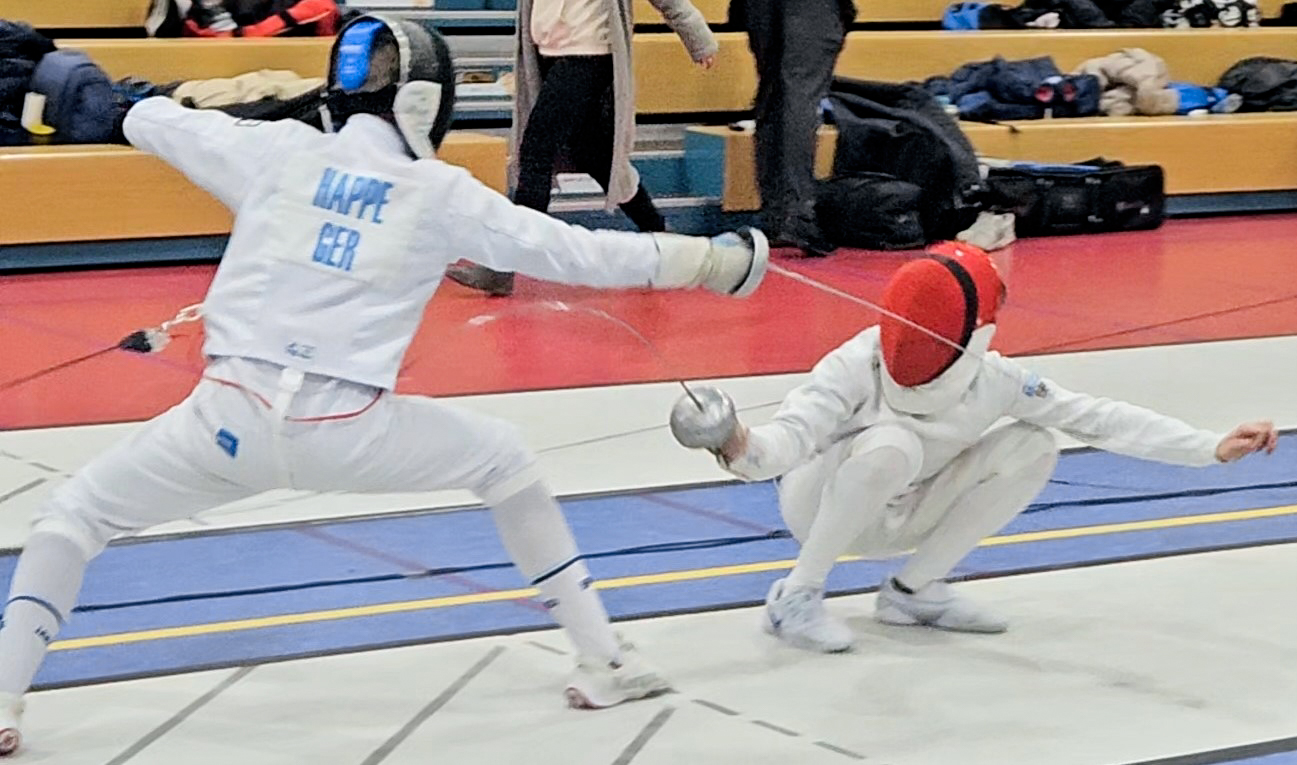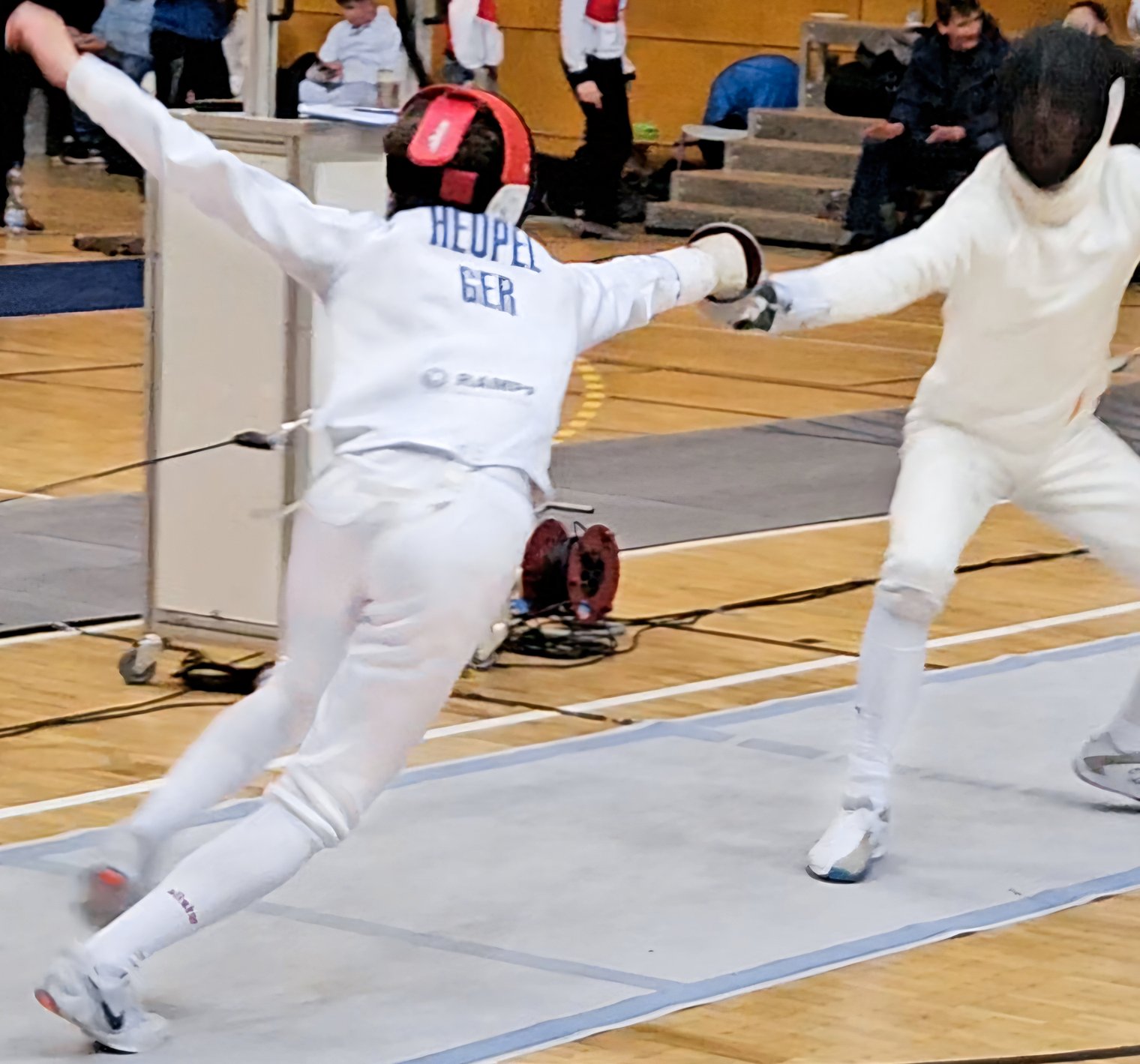
“En garde!” – With Épée, Discipline, and Determination: A Portrait of Fencing Talent Jan Heupel
“En garde!”, “Allez!”, “Touché!” – Fencing is fast, elegant, and steeped in tradition. Common expressions like “on guard” or “to parry” trace back to the fencing piste, where tactics, technique, and split-second timing decide the outcome. One of the sport’s rising stars is Jan Heupel from Reutlingen – a top talent in his age group, actively supported by the RAMPF Group.
“Fencing has been part of my life since childhood”
Jan, when and why did you start fencing?
I’ve been with the fencing club at TSG Reutlingen since 2017. My father was also a fencer – he sparked my enthusiasm for the sport early on. A year later, I passed my fencing proficiency test and was allowed to compete in my first tournament in June 2018.
Modern fencing has little in common with medieval duels. Today, it’s a high-performance sport with three disciplines: foil, épée, and sabre. Jan competes with the épée – the heaviest and longest of the three weapons. Unlike foil and sabre, the entire body is a valid target in épée, which makes the sport especially tactical.
A successful épée fencer needs a high level of concentration, precision, and speed. Since the whole body is fair game, a fencer must anticipate their opponent’s movements and strike at just the right moment.
“What fascinates me is the fairness of a one-on-one duel.”
What do you particularly enjoy about fencing?
The dynamics, the one-on-one nature of the duels, the speed. And above all, the respectful interaction between competitors.
Fairness is deeply rooted in fencing tradition. Every hit is registered electronically – but a handshake at the end of every bout is also part of the sport.

“Fencing is like chess with 750 grams of steel in your hand,” said German elite fencer Imke Duplitzer.
What makes a good fencer?
You have to be fast and agile, stay focused, and have good reflexes. You also have to make quick decisions and adapt your strategy at any moment during a bout.
Fencing is often compared to chess – but played in a confined space and under physical intensity. Fencers wear extensive protective gear that can withstand great forces. For instance, a fencing jacket must endure up to 800 newtons per square centimeter – equivalent to around 80 kilograms on an area the size of a fingernail.
Incidentally, this special clothing is tested at the Textile Research Institute in Denkendorf – not far from RAMPF in Grafenberg. There, the materials go through demanding tests, including one where a 19-kilogram steel stamp is dropped from a height of 2.6 meters onto the fabric – without penetrating it.

Celebrating success – and setting new goals
When did you realize you had a special talent?
When I qualified for the German Championships for the first time at age 13.
What has been your greatest success so far?
Sixth place at the Baden North Württemberg State Championships (U13), tenth place in the U15 – and currently I’m ranked eighth in Württemberg and 29th in the German U15.
How often do you train each week?
Three times a week for two hours each. During the Easter holidays, I also attend a training camp in Heidenheim to prepare for the German Championships.
Who supports you on your journey?
My parents drive me to all the tournaments, and my coach analyzes every bout with me.
What’s your next big goal?
To qualify for the German U15 Championships – and one day, I want to compete in international tournaments.
“Touché, Jan – we tip our hat to you!”
With his discipline, talent, and passion, Jan Heupel perfectly embodies what fencing is all about – elegance, precision, and fairness. At RAMPF, we’re proud to support him on his journey:
Allez, Jan – we wish you great success, quick feet, and an even quicker point at your upcoming tournaments!
